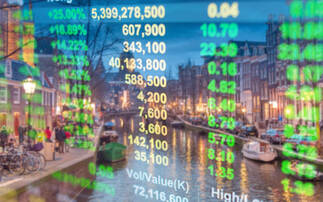David Abner, head of Europe at WisdomTree, looks at the key tactics for trading ETFs successfully.
ETFs have grown dramatically in popularity both in the US and Europe thanks not only to their typically lower costs compared to mutual funds, but also because of their ease of use.
Treated like a share, ETFs allow instantaneous transactions to take place, with live trading helping investors capitalise on gains very efficiently.
However, trading ETFs can be more complicated than it first appears. While they are one of the most transparent investments available, there are a number of potential pitfalls investors must watch out for if they are to maximise their returns from these products.
There are also different strategies for trading the products which provide opportunities to enhance returns and limit downsides.
The 10 keys to trading ETFs
So how can investors improve their trading techniques when it comes to ETFs?
1: Understand the fair value of the ETF you intend to trade.
2: Try not to trade during the first 15 and last 15 minutes of trading.
3: Focus trading of ETFs with various underlying assets at times when those assets are trading and overlapping with local market hours. For example, trade US-focused ETFs during the afternoon in Europe after that market has opened.
4: Utilise the full gamut of order types available:
• Place a limit order. Limit orders are most effective when they are placed in relation to the intraday indicative value (IIV) of the ETF with domestic underlyings or in relation to an eNAV when trading an ETF, where the underlyings are not trading at the same time as the basket. When doing so, you should be cognizant of where the ETF should be trading.
• Do not use market orders. This order type is only good for specific trading strategies in a select number of very-high-volume ETFs.
• If you must use stop orders, only use stop-limit. It is important to place your limits appropriately to increase your probability of execution. I would recommend avoiding stop orders in ETFs as they provide a false sense of security for managing a portfolio.
• Utilise algorithms only when appropriate. You can use any algorithm on either the actual ETF shares or the basket of constituents. If you are looking to trade a large amount of shares in a low-volume ETF, you will essentially be the volume-weighted average price (VWAP); so using that type of algorithm is not advisable.
• Have an authorised participant (AP) process any NAV-based transaction. If you are satisfied being based on the closing prices, this will produce a price at NAV. If you have the AP utilise an algorithm to trade the basket throughout the day, this will provide an execution at an implied NAV price. This does not have to be in creation unit size but will involve trading the underlying basket and interpolating those executions into ETF shares.












